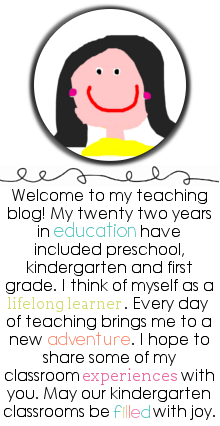For today’s blog post, I hope to share with you tips on strengthening your small group reading instruction such as: guided reading, strategy groups, or shared reading. The goal is to tailor our instruction to meet the needs of our students.
When I first started teaching, I thought every child should be in a guided reading group from the start. I recently have changed my mind about this, from having conversations with colleagues, listening to experts, and reading books. I now think If we are starting guided reading groups, our hope is that the child moves levels within a few weeks of solid instruction. If a child is not going to make a lot of movement with strong instruction, then I would rather use other kinds of group instruction first such as shared reading.
I used to think I needed to meet every child in the class each week, and I have recently changed my mind on this after hearing a presentation from Natalie Louis. Since students benefit from repeated practice, she suggested sticking with the same kids for a few days. Don’t feel like you need to meet with every kid each week. For our bravest readers in the class (the kids who struggle), I would suggest meeting with them on most day.
Tips for The Guided Reading Format (Fountas and Pinnell)
Goal: The Guided Reading Group Should be ten minutes long (brief)
The students should do most of the talking and most of the work, not the teacher. The child should be holding the book and turning the pages. We want to scaffold our teaching rather than rescuing.
Step 1 Select a book
It is important to find the child’s highest instructional level. Over the years, I have had a few conversations with teachers who sometimes say things such as, “I have this group reading in their Just Right Level because I don’t want to push them.” When a child reads a book, and they get all the words correct, that means it is too easy, there is no teaching taking place.
Step 2 Introduce the book
When giving a picture walk, the teacher needs to decide what kind of scaffolding does the group need. The question is, do we give them a heavy, medium or light scaffold? A group of emergent readers will probably need a heavy picture walk. As students become comfortable in the reading group your scaffold should lessen with the students taking a sneak peak/picture walk on their own!
Step 3 Read the book
I like to stagger the books; that way they are not reading round robin style. Have students whisper read unless they are tapped to read aloud. It’s important that students know to reread the book when they finish. Coach with lean prompts to remind the students of the strategies to try. Have the students be in charge of touching and turning the pages.
Step 4 Respond to the book and have one teaching point
What were students working on during the lesson; make that your teaching point. Make your teaching point clear.
Step 5 Assess students
Take notes on how the child is doing in the group. Are they problem-solving independently? Kids can make epic jumps in their levels they don’t necessary go from a level C to a level D to an E.
At the end of the reading have the students do a quick retell about the book. Make sure students know that readers always understand what they read.
You could have students do a quick turn and talk to a partner about a favorite part.
After the reading, send students off to read the book to a friend.
At the end of the reading have the students do a quick retell about the book. Make sure students know that readers always understand what they read.
You could have students do a quick turn and talk to a partner about a favorite part.
After the reading, send students off to read the book to a friend.
When do we know when kids are ready for conventional reading?
- Looking at the assessment data of the child, what does it tell you?
- Does the child enjoy books and appear engaged and excited to read?
- Does the child retell favorite picture books using the pictures and some story language?
- Look at the child’s writing, are they writing beginning and ending letters when they write?
- Can the child read their writing back to you?
- Remember a child does not have to know all of their letters to begin reading instruction.
Book Baggies
At reading workshop time students should have 10-12 books in their book baggies. These books could be at the child's independent level and books given to the child during reading group time. Students could also have class made books and familiar songs and poems. Here is a post on how students can shop for books.
Below are some templates I have been using for guided reading groups. You may find them helpful to use. If you have tips and tools that work for you, I would love to hear from you!
Happy Reading!
Happy Vacation!
Happy Vacation!






























These are great tips! (As always.)
ReplyDeleteTammy,
ReplyDeleteBeing a Reading Recovery teacher, I am sure you do lots of this stuff. Although, I really love the idea of making the group shorter. Melissa
pg slot login ทางเข้าแห่งความหรรษา ที่ทุกท่านจะได้รับหลังจากที่เข้าสู่ระบบ กับเว็บ สล็อต ออนไลน์ของเรา กับ สล็อตออนไลน์ที่ดีที่สุด แตกบ่อยที่สุด ปลอดภัยที่สุดวนปี 2022 นี้
ReplyDelete